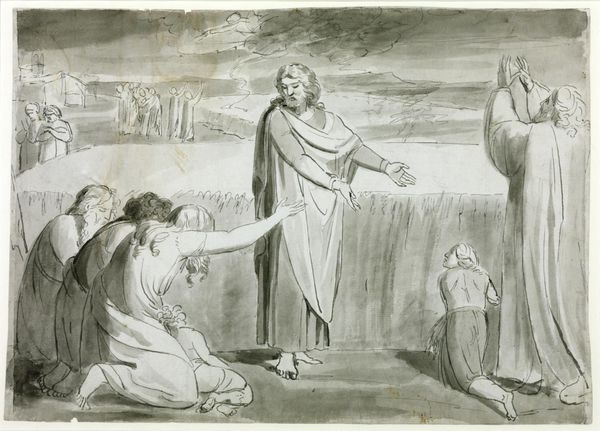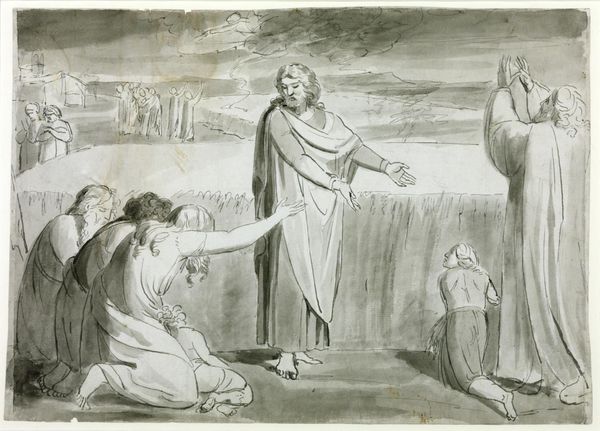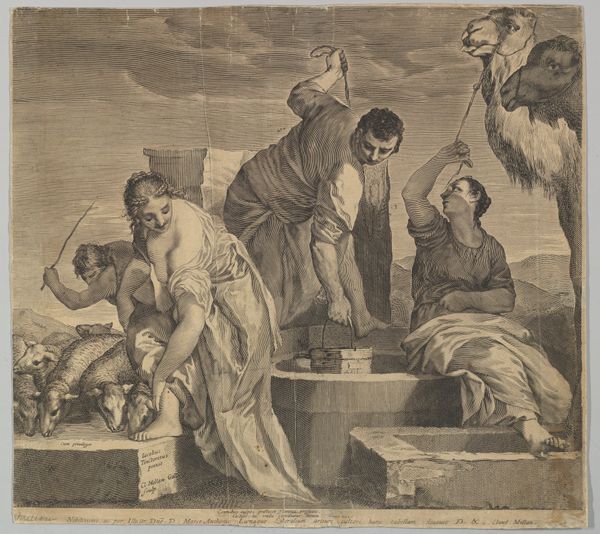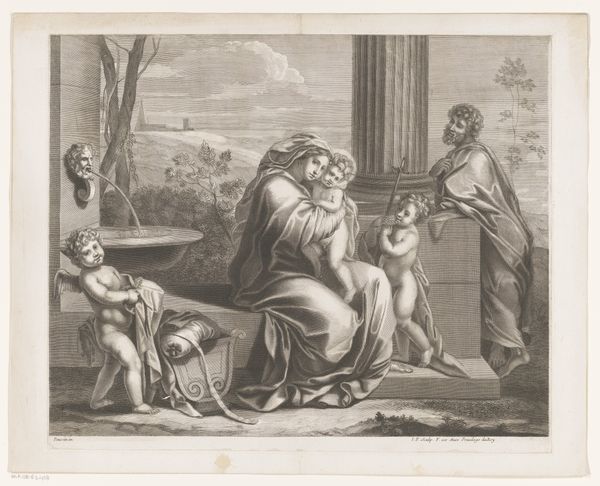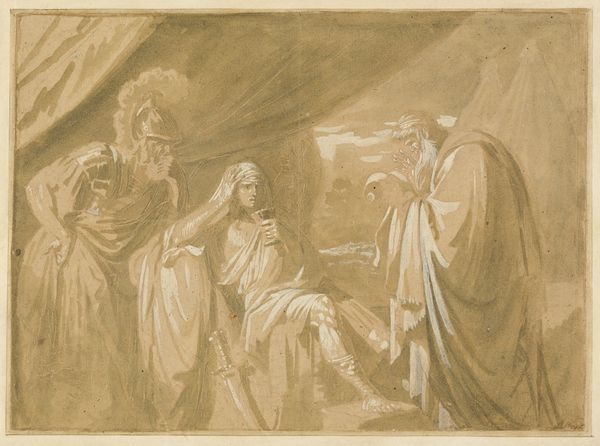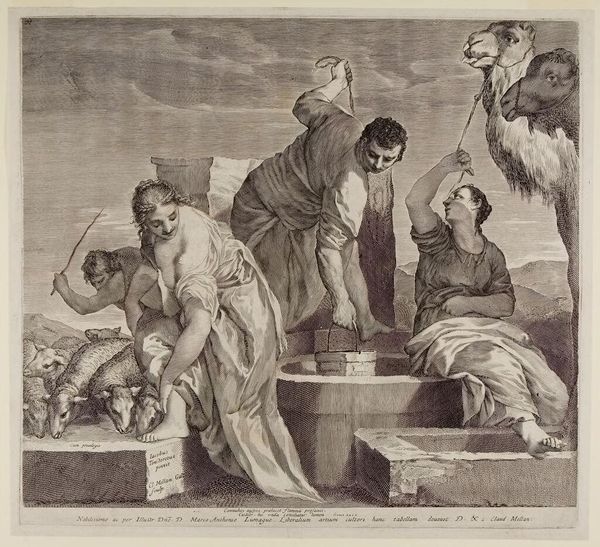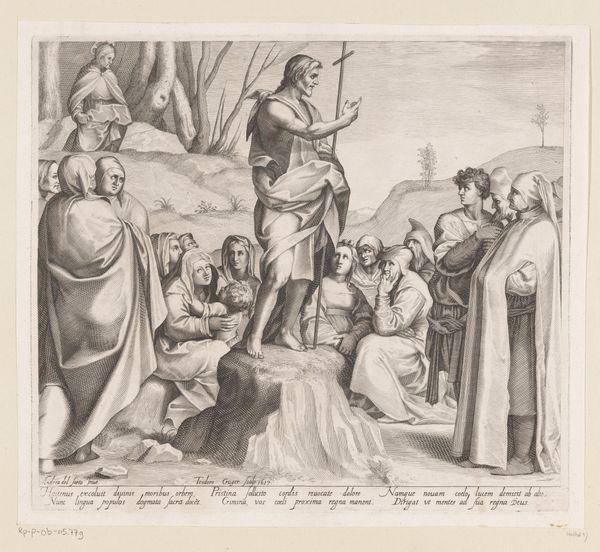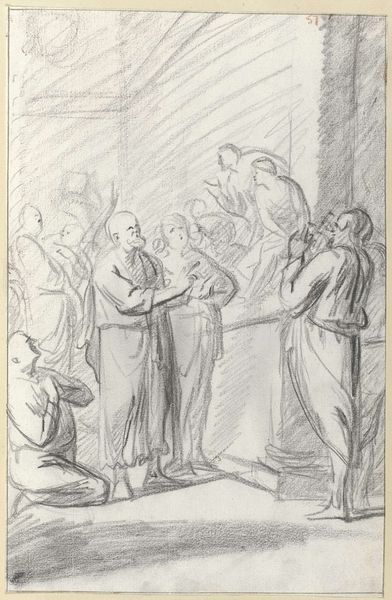
The Good Farmer, Probably the Parable of the Wheat and the Tares. Verso: Rough Sketch of Two or Three Figures in a Landscape c. 1780 - 1785
0:00
0:00
Dimensions: support: 267 x 375 mm
Copyright: CC-BY-NC-ND 4.0 DEED, Photo: Tate
Editor: This is William Blake's "The Good Farmer, Probably the Parable of the Wheat and the Tares," from the Tate Collections. I’m struck by its somber mood and the dynamic composition of figures. What do you see in this piece? Curator: Note how Blake employs a limited tonal palette to evoke a sense of the ethereal. The stark contrast between light and shadow, created through delicate washes, underscores the moral weight of the composition. Observe the gestural language; consider its semiotic implications. Editor: So it’s less about the story and more about the visual relationships? Curator: Precisely. It is in the formal arrangement that the narrative finds its power. Editor: I hadn't considered it that way. Thanks, that's really helpful! Curator: Indeed. The essence lies within the form itself.
Comments
tate 3 months ago
⋮
http://www.tate.org.uk/art/artworks/blake-the-good-farmer-probably-the-parable-of-the-wheat-and-the-tares-verso-rough-sketch-n05198
Join the conversation
Join millions of artists and users on Artera today and experience the ultimate creative platform.
tate 3 months ago
⋮
This pen and wash drawing is probably inspired by the biblical story of the wheat and the tares (weeds). Blake shows a Christ-like figure in the centre, appearing to differentiate between the two kneeling groups of people. In the background, a figure emerges from a threatening dark cloud, perhaps casting judgement on the group of figures below. This story is from the Gospel of St Matthew, when Jesus used the imagery of the harvest to describe the last judgement. Blake explored this subject in seven sketches in the 1780s. Gallery label, October 2023
